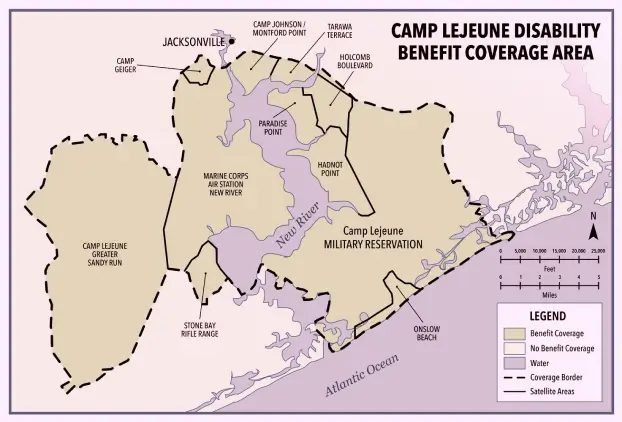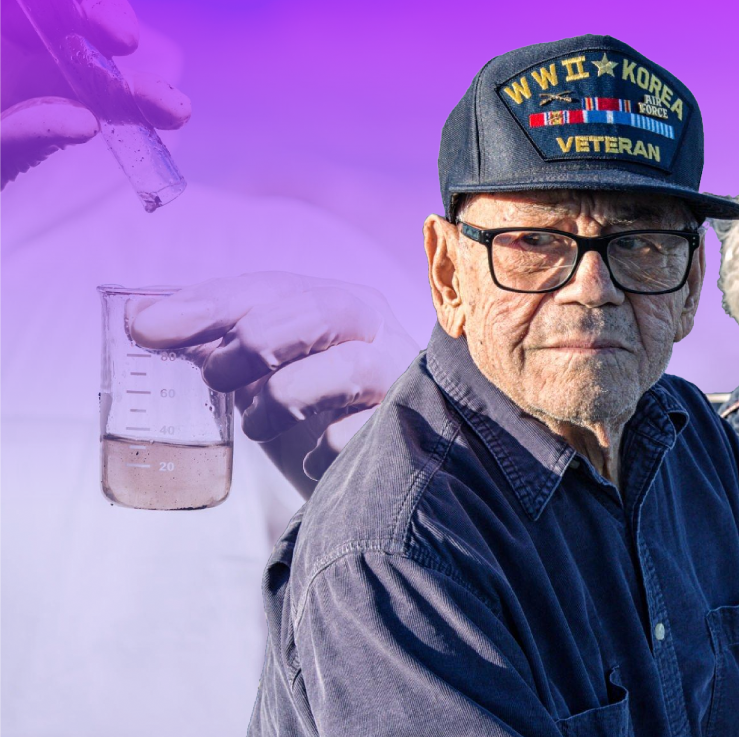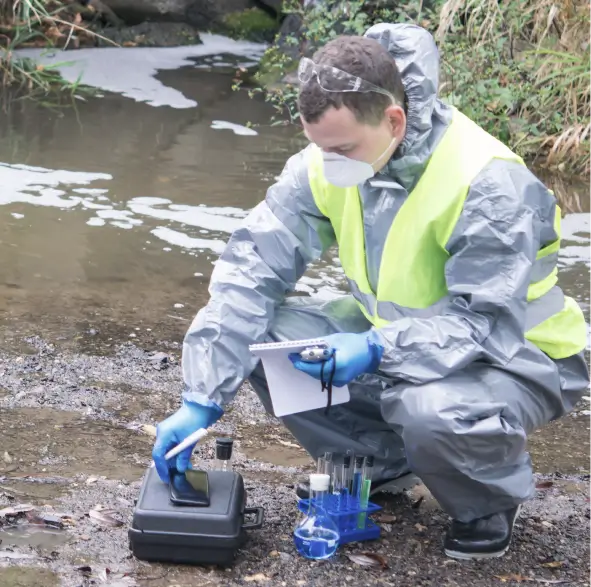CAMP LEJEUNE SURVIVORS MAY BE ELIGIBLE FOR CASH COMPENSATION FROM THE U.S. GOVERNMENT
You may qualify for compensation if you/your loved one sustained injuries including cancer after being stationed at Camp Lejeune for at least 30 days.
Take this 45 Second Application to see if you/your loved one Qualify
FIND OUT IF YOU HAVE A CLAIM NOW
Inquiries are 100% Secure and Confidential
By hitting submit, I consent to receive SMS text messages as a means of communication as well as emails and direct calls. This authorization overrides any previous request to be on any Do Not Call list. Message and data rates may apply, frequency varies by need. If you wish not to receive SMS communication please do not hit submit. **Standard text message charges may apply from your wireless provider, depending on your text message plan.

Between August 1, 1953, and December 31, 1987, Camp Lejeune’s water supply was contaminated with harmful chemicals, including benzene and vinyl chloride, posing a serious health risk to those stationed there.
Health Impact
Exposure to these toxic chemicals has been linked to severe health issues, including various forms of cancer, neurological disorders, reproductive problems, and more. These health impacts have left numerous individuals and families struggling.
Insights from Camp Lejeune Water Contamination Studies
Scientific Advisory Panel (2005)
Elevated levels of PFAS were discovered in areas with AFFF usage, signifying potential environmental contamination.
ATSDR's Public Health Assessment (1997)
Identified lower VOC levels in the water, with a recommendation for further studies on effects on fetuses and children.
Adverse Birth Outcomes Study (1998)
Investigated the link between maternal exposure to VOCs and birth outcomes like preterm births and SGA.
The Camp Lejeune Justice Act (CLJA) of 2022
The Camp Lejeune Justice Act (CLJA) of 2022 offers a path to justice. Victims now have the right to file claims with the Department of the Navy and seek relief in Federal court for denied claims or delays.

Understanding CLJA: A Step Towards Justice
Signed into law by President Biden on August 10, 2021, the CLJA allows individuals, including veterans, exposed to contaminated water at Camp Lejeune to file a new claim with the Department of the Navy. Relief can be sought in Federal court if a claim is denied or if no decision is made six months after filing.
Elective Option for Expedited Claims: A Faster Resolution and Payout
In collaboration, the Navy and the Department of Justice have introduced an Elective Option to expedite claims under the CLJA. This ensures a faster resolution and payout, ranging from $150,000 to $450,000, with an additional $100,000 in case of exposure-related death.
Compensation Tiers for Camp Lejeune Victims:
Compensation is categorized into tiers based on the strength of evidence linking the disease to the contaminants and the duration of exposure.
Tier 1 Diagnoses
These diseases include:
- Kidney cancer
- Liver cancer
- Non-Hodgkin’s lymphoma
- Leukemia
- Bladder cancer
Tier 2 Diagnoses
These diseases include:
- Aplastic anemia
- Brain cancer
- Cervical cancer
- Colon cancer
- Ovarian cancer
- Prostate cancer
Tier 3 Diagnoses
These diseases include:
- Appendix cancer
- Bile duct cancer
- Gallbladder cancer
- Pancreatic cancer
- Spinal cancer
- Thyroid cancer
Eligibility for Filing a Camp Lejeune Lawsuit
You may be eligible to file a claim under the Camp Lejeune Justice Act of 2022 if you meet the following criteria:
- Exposure to Contaminated Water: You served, resided, worked, or were otherwise exposed (including in utero) to contaminated water at Camp Lejeune.
- Duration of Exposure: You were exposed to the contaminated water for at least 30 days between August 1953 and December 1987.
- Diagnosis: You have been diagnosed with one or more of the qualifying conditions associated with the water contamination at Camp Lejeune.
By meeting these criteria, you may be eligible to file a Camp Lejeune claim.
Time Limit for Filing a Claim
The Act stipulates a two-year statute of limitations. This means eligible individuals have a two-year window from the enactment of the Act to file a claim for potential compensation for injuries resulting from exposure to the contaminated water.
While compensation can’t erase the pain or bring a loved one back, holding those responsible is crucial, and you deserve compensation for the suffering endured.
Time Limit for Filing a Claim
The Act stipulates a two-year statute of limitations. This means eligible individuals have a two-year window from the enactment of the Act to file a claim for potential compensation for injuries resulting from exposure to the contaminated water.
While compensation can’t erase the pain or bring a loved one back, holding those responsible is crucial, and you deserve compensation for the suffering endured.

